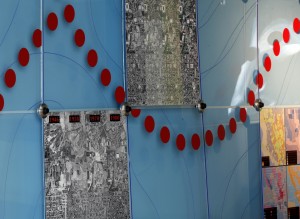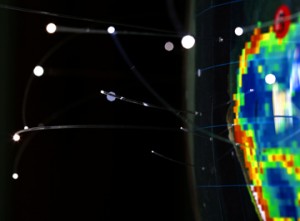Geospatial Technologies Connect You to the World
The Harold B. Lee Library has just opened a new exhibition that shows off our amazing collection of geospatial technologies. The library has had a great map library for some time. We have one of the best collections of printed maps in the area, but our new exhibition, “Geospatial Technologies Connect You to the World,” illustrates the many ways mapping technology is having an impact on our lives today.
Visitors can interact with the exhibit by choosing videos and maps using display control panels. Once you’ve picked a map you can digitally pull back the layers to discover all the information it contains. There is also a history of GPS systems that created the geospatial revolution we enjoy today. Everything from highway construction to package delivery and even finding your way to a party now relies on geospatial systems.
Students will be able to enter a geography contest to test their geospatial knowledge.
Advances in instrumentation, computing power and mobile devices have led to an explosion of spatial data that pertains to our physical and biological world. These same technologic advances have also brought about ways to manage these huge datasets, to conduct spatial analysis, generate visualizations, methods of communicating and using these data to support critical decisions. The Harold B. Lee Library provides access to many important datasets, such as U.S. Census Data from 1790 to 2010 easily accessible through an interactive map interface. Students and faculty at BYU can also access online visualization and analysis tools through the library’s website. These data and tools may be coupled with extensive business and demographic databases that can be used alone or with additional data collected in the course of their research and study. Global Positioning System receivers are also available for students and faculty to use in their courses and research. The goal is to connect students and faculty to local, regional, and global issues and problems and give them the ability to help solve them in ways that are truly sustainable physically and culturally.
The exhibition is located on the main level of the library and is open during all regular library hours.
The public is welcome and admission is free.


